Jen Black's Blog, page 42
May 6, 2018
Missing pics and wildlife
 One of the missing pics!Sometime after 2011 I had a computer die on me. That wasn't so bad, because it was easy enough to replace it ( at great cost, I might add!) but it took a lot of photographs with it and I thought I'd lost them forever.
One of the missing pics!Sometime after 2011 I had a computer die on me. That wasn't so bad, because it was easy enough to replace it ( at great cost, I might add!) but it took a lot of photographs with it and I thought I'd lost them forever. Some I probably have, but today I was looking for inspiration and checked my blog for 2011 and found I'd written about our trip north to Ullapool and then to friends in Banchory in the Cairngorms. I'd included pictures! There were many of the missing photographs, so I saved them immediately before I lost track of them again!
Such a small thing, but it really made me happy.
It looks like we're going to have a third day of hot weather 18-20 degrees. One hardly knows what to wear. It was just above freezing last week. One effect is the gardens have sprung into life - everything is green and sprouting, and the birds are dashing about building nests. Unfortunately our thrush gave up on the nest he built in the blue cedar. Maybe we made too much noise, or our neighbour sat too close to the fence (only about a yard from the nest) or one the many neighbourhood cats chose to walk along the fence top and peer into the nest - anyway, he's gone, leaving one abandoned blue egg. We do have a balackbird in the ivy close to the patio windows and can watch him dashing in and out with mud and moss in his beak. We think there's another nest in the leylandii around the side of the house.
We've had no frogs in the small sink this year, so no tadpoles to watch. There are wasps in the eves. We see mice occasionsally - one is acrobatic enough to shimmy up the six foot pole to reach the bird table and snaffle the peanuts. Another sort of wildlife lives in the gardens though - a neighbour called in the pest control man because she had seen rats running along under the leylandii. It seems our compost bin was the attraction, plus all the bird food that gets put out around here. (Not just us, I hasten to add) Anyway our compost bin is no more and the body of one young, dead rat was found. A short life for him. Seems those neighbourhood cats are not earning their keep!
Published on May 06, 2018 02:11
May 3, 2018
To pay or not to pay?
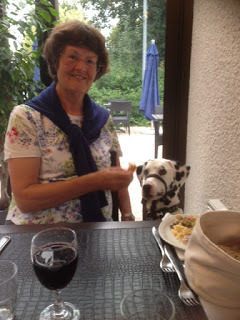 Spotted this article from Jane Friedman this morning and intend to study it closely since I have been wondering about how to increase the number of my reiews - particularly for my latest Viking Summer, which currently has none. I have looked at Brag Medallions and such like and was shocked - shocked, I tell you - to discover that you paid to send your work in for a "possible review/award." It has always been the way of the big book prize competitions to charge an entry fee, but I assumed that the money funded the cash prize that went to the winner. Anyway, I have steered clear of both! Jane Friedman says:Paying for professional book reviews remains a controversial topic that very few authors have practical, unbiased information about. In fact, it’s not even well-known in the author community that paid book reviews exist, and even less is known about the value of such reviews.Before I discuss the pros and cons of paid reviews, I want to define them (strictly for the purposes of this post).§ Trade book reviews. Trade publications are those read by booksellers, librarians, and others who work inside the industry (as opposed to readers/consumers). Such publications primarily provide pre-publication reviews of traditionally published books, whether from small or large presses. Typically, these publications have been operating for a long time and have a history of serving publishing professionals. However, with the rise of self-publishing, some trade review outlets have begun paid review programs especially for self-published authors. Examples: Kirkus Reviews and Foreword Reviews.§ Non-trade book reviews. Because of the increased demand for professional reviews of self-published work, you can now find online publications that specialize in providing such services. These publications or websites may have some reach and visibility to the trade, or they may be reader-facing, or a mix of both. Examples: Indie Reader, Blue Ink Review, Self-Publishing Review.§ Reader (non-professional) reviews. It’s considered unethical to pay for reader reviews posted at Amazon or other sites, and Amazon is actively trying to curb the practice.This post is focused on the first two types of paid reviews; I recommend you stay away from the third.Some of you reading this post may be looking for a quick and easy answer to the question of whether you should invest in a paid book review. Here’s what I think in a nutshell, although a lot of people will be unhappy with me saying so:The majority of authors will not sufficiently benefit from paid book reviews, and should invest their time and money elsewhere.
Spotted this article from Jane Friedman this morning and intend to study it closely since I have been wondering about how to increase the number of my reiews - particularly for my latest Viking Summer, which currently has none. I have looked at Brag Medallions and such like and was shocked - shocked, I tell you - to discover that you paid to send your work in for a "possible review/award." It has always been the way of the big book prize competitions to charge an entry fee, but I assumed that the money funded the cash prize that went to the winner. Anyway, I have steered clear of both! Jane Friedman says:Paying for professional book reviews remains a controversial topic that very few authors have practical, unbiased information about. In fact, it’s not even well-known in the author community that paid book reviews exist, and even less is known about the value of such reviews.Before I discuss the pros and cons of paid reviews, I want to define them (strictly for the purposes of this post).§ Trade book reviews. Trade publications are those read by booksellers, librarians, and others who work inside the industry (as opposed to readers/consumers). Such publications primarily provide pre-publication reviews of traditionally published books, whether from small or large presses. Typically, these publications have been operating for a long time and have a history of serving publishing professionals. However, with the rise of self-publishing, some trade review outlets have begun paid review programs especially for self-published authors. Examples: Kirkus Reviews and Foreword Reviews.§ Non-trade book reviews. Because of the increased demand for professional reviews of self-published work, you can now find online publications that specialize in providing such services. These publications or websites may have some reach and visibility to the trade, or they may be reader-facing, or a mix of both. Examples: Indie Reader, Blue Ink Review, Self-Publishing Review.§ Reader (non-professional) reviews. It’s considered unethical to pay for reader reviews posted at Amazon or other sites, and Amazon is actively trying to curb the practice.This post is focused on the first two types of paid reviews; I recommend you stay away from the third.Some of you reading this post may be looking for a quick and easy answer to the question of whether you should invest in a paid book review. Here’s what I think in a nutshell, although a lot of people will be unhappy with me saying so:The majority of authors will not sufficiently benefit from paid book reviews, and should invest their time and money elsewhere.She has a lot more to say, and a lot of information on the website for those who wish to discover it. I have bookmarked the site and I have no doubt I will learn a lot from it! Find it here:
https://www.janefriedman.com/paid-book-reviews/
Published on May 03, 2018 02:52
April 30, 2018
Lord Lennox
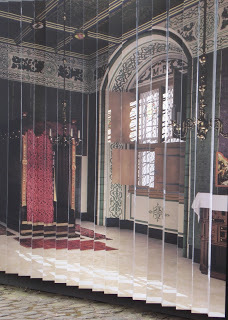 In 1531, Matthew Stewart, Earl of Lennox, aged 15 and feeling threatened by the Hamilton clan headed by Lord Arran, sailed for France and joined the Royal Guard, became a naturalised subject of the French King and changed the spelling of his surname from Stewart to Stuart.
In 1531, Matthew Stewart, Earl of Lennox, aged 15 and feeling threatened by the Hamilton clan headed by Lord Arran, sailed for France and joined the Royal Guard, became a naturalised subject of the French King and changed the spelling of his surname from Stewart to Stuart. In 1543 he returned to Scotland and began paying court to Marie de Guise, the Dowager Queen of Scotland. Reported as a handsome, charming and gallant man, or, in the words of the times, "well-proportioned with lusty and manly visage, and carried himself erect and stately, wherefore he was very pleasant in the sight of gentlewomen." She was said to have enjoyed his company, which was not surprising since he spoke her native tongue fluently and was skilled in playing the lute. Both she and Cardinal Beaton thought Lennox would support them against the ambitions of Arran, but they discovered him to be unreliable and driven by self-interest, which was understandable when his livings in France were denied him and he had little that brought him money in Scotland. The lands that should have belonged to him had been scattered among the greedy lords when he left for France. Marie refused to marry him, and eventually he defected to the English to see if overtures from Henry VIII would pay off. In return for his support against the Scots, Henry VIII bestowed on him the hand of his niece, Lady Margaret Douglas.
The wedding took place in July 1544 at St James's Palace in London. Born the same year as Lennox, Margaret was the daughter of Henry VIII's elder sister, Margaret Tudor (widow of James IV and grandmother of Mary, Queen of Scots) by her second husband, Archibald Douglas, Earl of Angus. She was close enough to the English throne to be controlled by Henry, and yet he allowed a marriage between her and Lennox that could only reinforce the dynastic claims of both parties. Of course, at that time Henry had his beloved Prince Edward, and two daughters to follow him in the succession. Their marriage seems to have been a love match: he was said to be 'far in love', and in his letters addressed Meg as 'mine own sweet Madge' or 'my Meg', told her she was his 'chiefest comfort', and signed himself 'Your own Matthieu and most loving husband'.
Margaret was a devout Roman Catholic, so Lennox, who had been reared in the old faith but recently favoured the new religion, tempered his views to please her and also King Henry. Religion was a matter of expediency with him.
Regretably I cannot find a picture of said Lord Lennox, certainly not one that is listed with certainty as him, so I have included a picture of my own taken on a trip to Stirling Castle on a grey day a couple of years ago. I was there familiarising myself with the place because I was, and still am, writing about Stirling and the Dowager Queen, Lord Lennox and Meg Douglas.
Published on April 30, 2018 02:55
April 24, 2018
A review I like!
19 April 2018AMAZON UK £1.20 £8.99AMAZON US $1.66 $14.53AMAZON CA $1.95
Fictional saga1500s TudorScotland
Jen Black’s novels are a delight to read, not merely because of the enjoyment of ‘romance’ but because she is adept at diversifying from one period to another with apparent ease. This one is set in that troubling Tudor era where England and Scotland do not see eye-to-eye. Here, the future Mary Queen of Scots has her life mapped out by her mother, Mary of Guise and the English monarch, Henry VIII. But not all maps are reliable or pre-ordained, nor do the map-makers necessarily agree with each others’ marks on the charts they hope to produce.
The Queen’s Courier is a sequel to Abduction of the Scots Queen, where Matho Spirston had kidnapped Mary, an infant, and given her into the care of Margaret Douglas - Meg - the daughter of the Earl of Angus and Henry VIII’s sister, with Meg then being blamed for the deed. But it is not necessary to read this first novel (although I would recommend it!)
Matthew, Earl of Lennox, champions Meg but he is greedy for power, and as the niece to the English King, Meg herself is obliged to retain her virginity and follow the King’s permission for marriage. As for the future Mary Queen of Scots, Henry wants her as wife to his son, Edward. Her mother has different plans.
The author, in addition to being able to write delightful novels, is skilled at taking the reader right into the feel of time and place, by painting visual pictures within her narrative. Her research is well done, as is her depiction of the unsettled politics of the period, with all the upheaval of war, intrigue, scandal, plot after counter-plot and the dangers of being an appointed spy where messages had to be taken in utmost secrecy between Scotland, London and France.
Jen Black’s characters are believable, the diplomacy, the scheming, the hopes, dreams, nightmares and dangers all zip along at a good page-turning pace. The only regret I had is knowing the eventual fate of Mary Queen of Scots!
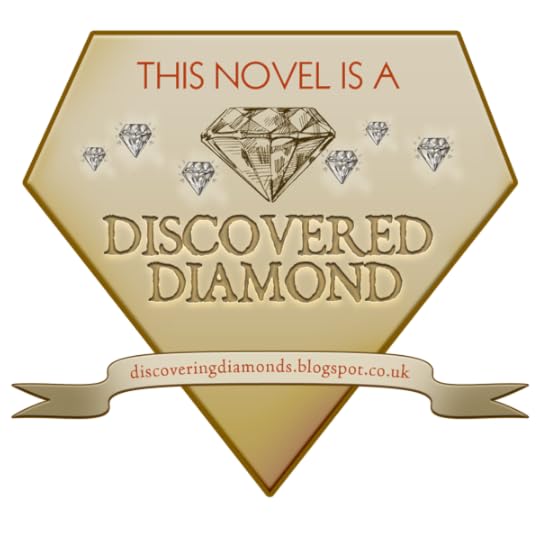
© Ellen Hill
Published on April 24, 2018 02:10
April 21, 2018
Metadate 2
 When thinking about the metadata for your book, don't skimp on detail: include all that is necessary - your book's title, subtitle, contributors, your own name, all the normal stuff.
When thinking about the metadata for your book, don't skimp on detail: include all that is necessary - your book's title, subtitle, contributors, your own name, all the normal stuff.Then we’re off into the realms of category and classification. Amazon gives me 7 keyword slots to fill in and I try to use every single one of them. Firstly I tagged my books as romance, then added historical romance and thought I’d done well; then discovered I should be more specific; not just “romance,” but "adult steampunk fantasy romance." (Not that I ever wrote anything to fit that classification!)Instead of "historical" something more like "late Victorian Underworld zombie mash-up" seems to be the way to go.
If you don’t feel inspired, type a couple of keywords into Amazon and see what other authors use. Amazon even offers advice and recommends keywords for certain sub-categories. I was aware that BISAC Subject Codes existed – after all, I was a librarian! – but I’d never thought of using them in my self-publishing. BISAC Subject Headings categorize books by content so why not check them and see if their headings inspire you?
Think about including important story elements such as the occupation of your protagonist, the time period and place in which your book is set. Does it include any specific historic event? If so, work that in.
If you quote reviews in your book description, ask the reviewer if you may include a keyword. He may have written "Best thriller I have ever read!" but "best post-apocalyptic thriller I have ever read!" is even better.
Make excerpts from your book available where you can.
Provide links to your website and social media pages where allowed.
Add your author location if you want to appeal to your local audience.
Published on April 21, 2018 04:01
April 18, 2018
Metadata
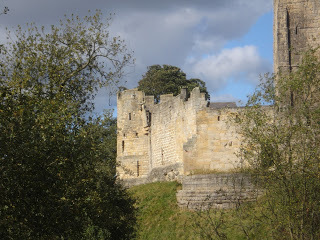 For a long time after I first self-published, I had no idea what Metadata might be. Then one day I fell across something on the internet that made me feel I had to find out more about this strange sounding word. That is when I discovered that Metadata is the information that makes your book searchable. Or put it another way – potential readers can find your book by the Metadata you provide - such as the author name, the category, price, ISBN and title. Enhanced metadata include author bios, blurbs, review quotes and more.If you are an indie author you will have to list Metadata at every place you publish your book – Nook, Kobo, Amazon etc. Like me, you may not have realised this is what you were doing!It was about this time that I ran into another puzzle. What was SEO all about? It stands for search engine optimization and guess what? Metadata is the information that search engines look for when someone searches for a book. The advice was to create metadata that fitted my book and matched my target audience. Author name etc was not a problem, I could supply that sort of factual info with ease, but Keywords and Categories proved a different thing altogether. My next problem was which Keywords and Categories to choose. Sounds simple, but I’m not sure I’ve got it quite right even now. In my next post I shall run through some of the good advice I’ve discovered.
For a long time after I first self-published, I had no idea what Metadata might be. Then one day I fell across something on the internet that made me feel I had to find out more about this strange sounding word. That is when I discovered that Metadata is the information that makes your book searchable. Or put it another way – potential readers can find your book by the Metadata you provide - such as the author name, the category, price, ISBN and title. Enhanced metadata include author bios, blurbs, review quotes and more.If you are an indie author you will have to list Metadata at every place you publish your book – Nook, Kobo, Amazon etc. Like me, you may not have realised this is what you were doing!It was about this time that I ran into another puzzle. What was SEO all about? It stands for search engine optimization and guess what? Metadata is the information that search engines look for when someone searches for a book. The advice was to create metadata that fitted my book and matched my target audience. Author name etc was not a problem, I could supply that sort of factual info with ease, but Keywords and Categories proved a different thing altogether. My next problem was which Keywords and Categories to choose. Sounds simple, but I’m not sure I’ve got it quite right even now. In my next post I shall run through some of the good advice I’ve discovered.
Published on April 18, 2018 04:42
April 16, 2018
A final word on Blurbs
 You Should:See if you can get some Quotes from well-known authors. Some will refuse you, but if one responds it will be worth it. The same applies to famous people reviewing your book because you can add their quotes to your book description. Quoting individual authors instead of publications will give you a much better click-through rate and that is what you want.
You Should:See if you can get some Quotes from well-known authors. Some will refuse you, but if one responds it will be worth it. The same applies to famous people reviewing your book because you can add their quotes to your book description. Quoting individual authors instead of publications will give you a much better click-through rate and that is what you want. If you have won awards for your writing including that too.
Pick the best 5-star review and add that to your description.
You Should Not:-
Never give away the end of the story. In fact, be sparing in your actual description; make the reader curious, but be sure not to give away too much plot. Avoid clichés and overused phrases like "in a world of..." which always makes me want to add the words "Myth and Magic"....because I heard it so many times while watching Merlin on tv.
Comparing yourself with other author can raise the wrong expectations with your readers. It is not very wise to call yourself the "new Stephen King" or advertise your book as the "next Fifty Shades of Grey."
Published on April 16, 2018 04:10
April 12, 2018
Blurbs - the professional way
Further advice on blurb writing - gleaned from various sources:
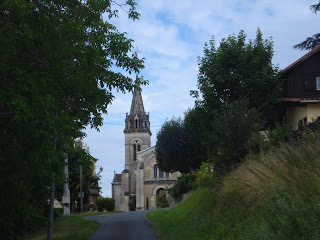 Guessing what will work with your readers might do the trick, but actual data might be better. There are various ways and means of accessing data.
Guessing what will work with your readers might do the trick, but actual data might be better. There are various ways and means of accessing data.Services like Manybooks allow you to test two different descriptions for your book to see which one gets the most downloads. Or you could send different version of your blurb to reviewers and see which version gets you the most responses. Though why reviewers would be bothered to do this beats me.
Create a poll on your blog or website and ask people to tell you which version they prefer. That might get better results and might be something I would try.
Run Facebook ads simultaneously with different “pick-up lines” in your ad description and see which ones get the most clicks - though I have doubts about this. Surely the first option will get the most responses? I wouldn't click on five versions of the same thing, and I don't think many people would. Providers like Constant Contact, GetResponse or AWeber will send your proposed blurbs to your subscribers to see which they prefer. Seems to me that I could set up an e-mail people would click without going to a company which no doubt will charge for doing this for you.
Most of this sounds like something I would not do, but I would send a blurb to a group in which I participate and ask for comments. Usually, the comments all seem to cancel each other out initially, but there is often a clear "winner" and that's the one I would go for.
Published on April 12, 2018 04:44
April 10, 2018
Writing Blurbs part 2
My research on writing blurbs has gleaned the following hints and tips which I include here to help me when next I come to write a blurb :
To put it simply, start with a situation, introduce a problem and promise a twist. So easy! Show the mood of the story if you can (and you should be able to do that!) Don't make a romance sound like a thriller - unless it is a thriller with a romance element!
Your first sentence may be the only one read by a potential reader, so aim for the biggest impact in that first sentence.
 Keep it short for the same reason.Make an impact with 100 words - 150 maximum. Also remember that short sentences grab attention. Try using white spacing to separate thoughts, break up blocks of text.
Keep it short for the same reason.Make an impact with 100 words - 150 maximum. Also remember that short sentences grab attention. Try using white spacing to separate thoughts, break up blocks of text. Introduce your characters by name and characterization: ie actor Steel Collins, murderer Joan Pellow. The trick is to make what you say memorable and stir the readers' curiosity
Add the place and time of your story ie "From his floating island home in medieval France, the wizard....”
Once you have a blurb, print it out to look at in a different format. View it on your phone, ipad, etc etc.
Plan to take your time with it. Begin with a short summary. Write your first version. Read and trim. Try different versions; do at least five and see how they strike you when you look back at your work a few days later. If you start writing your blurb before you finish writing your book, you will have plenty of time for adjustments to the blurb! So start early in the writing process.
The pic of Perigeaux has nothing to do with writing blurbs, but reminds me of a lovely hot day in France - I need it on the wet, dank, miserable rainy day!
Published on April 10, 2018 02:25
April 7, 2018
Blurbs

Do you have trouble writing blurbs? I find them almost as difficult as writing a synopsis, so I’m reading around the topic this week. After all, a good blurb should equal good sales and we all want those. Here are some preliminary findings:-Browsing bestsellers may not be a good idea, as the author’s name already sells the book, so the blurb may not be so terrific; browsing lesser-known but successful authors is a better idea.A good blurb aims to show the genre (the title and cover should also do this) and entice the reader to look inside.Highly effective blurbs are CONCISE and arouse the buyer’s CURIOSITY. It is a mistake to think a blurb is a summary, for a summary gives the plot away and answers curiosity. An effective blurb creates questions in the potential readers’ mind. The Blurb and the Look Inside feature don’t have long to impress anyone, so use some of your best writing in both.Other vital things to do - Check that your blurb flows well. Spellcheck it. Match your vocabulary to your target audience, because words they don’t understand can scare them away. Research your subject. Ask for opinions on your blurb - this can help you generate buzz before you publish.
Published on April 07, 2018 01:51
Jen Black's Blog
- Jen Black's profile
- 6 followers
Jen Black isn't a Goodreads Author
(yet),
but they
do have a blog,
so here are some recent posts imported from
their feed.



